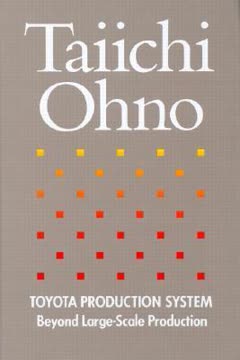Key Takeaways
1. Scrum: A Revolutionary Framework for Faster, Better Work
Scrum embraces uncertainty and creativity. It places a structure around the learning process, enabling teams to assess both what they've created and, just as important, how they created it.
Origins and core principles. Scrum, developed by Jeff Sutherland in 1993, is a framework for project management that emphasizes flexibility, adaptation, and rapid delivery of value. It draws inspiration from various sources:
- Japanese manufacturing techniques, particularly Toyota's production system
- The OODA (Observe, Orient, Decide, Act) loop from military strategy
- Agile software development principles
Key elements of Scrum include:
- Self-organizing, cross-functional teams
- Work divided into short "Sprints" (typically 1-4 weeks)
- Daily stand-up meetings for coordination
- Regular review and adaptation of processes
Revolutionary impact. Scrum has demonstrated remarkable results across industries:
- Productivity increases of 300-400%, with some teams achieving up to 800%
- Significant improvements in product quality and customer satisfaction
- Faster time-to-market and ability to adapt to changing requirements
2. The Power of Small, Cross-Functional Teams
Great teams have a purpose that is greater than the individual; e.g., burying General MacArthur, winning the NBA championship.
Optimal team size. Research consistently shows that smaller teams are more effective:
- Ideal size: 7 people (plus or minus 2)
- Teams larger than 9 people experience diminishing returns due to increased communication complexity
Cross-functionality. Effective Scrum teams possess all skills necessary to complete a project:
- Eliminates handoffs between specialized departments
- Promotes shared responsibility and rapid problem-solving
- Enhances creativity and innovation through diverse perspectives
Team dynamics. Successful Scrum teams exhibit:
- Transcendent purpose: A shared goal beyond individual interests
- Autonomy: Freedom to make decisions and self-organize
- Mastery: Continuous improvement of skills and processes
3. Time Management: Sprints and Daily Stand-ups
Do It Right the First Time. When you make a mistake, fix it right away. Stop everything else and address it. Fixing it later can take you more than twenty times longer than if you fix it now.
Sprints. Short, focused work cycles (typically 1-4 weeks) that:
- Create a sense of urgency and focus
- Allow for regular feedback and course correction
- Deliver tangible, working results at the end of each cycle
Daily Stand-up Meetings. Brief (15-minute) daily team check-ins that:
- Enhance communication and coordination
- Quickly identify and address obstacles
- Maintain team alignment and momentum
Time-boxing. Scrum emphasizes fixed time periods for work and meetings:
- Improves focus and efficiency
- Reduces wasted time and unnecessary meetings
- Encourages prioritization of high-value tasks
4. Eliminating Waste and Maximizing Efficiency
Doing more than one thing at a time makes you slower and worse at both tasks. Don't do it. If you think this doesn't apply to you, you're wrong—it does.
Multitasking myth. Research consistently shows that multitasking reduces productivity:
- Cognitive switching costs lead to a 20-40% reduction in efficiency
- Quality of work decreases across all tasks attempted simultaneously
Work in progress (WIP) limits. Scrum encourages focusing on fewer tasks at a time:
- Reduces context switching and cognitive load
- Increases flow and productivity
- Improves quality by allowing full focus on each task
Continuous improvement. Regular retrospectives help teams identify and eliminate waste:
- Process inefficiencies
- Unnecessary meetings or documentation
- Impediments to productivity
5. Planning for Reality, Not Fantasy
The Map Is Not the Terrain. Don't fall in love with your plan. It's almost certainly wrong.
Adaptive planning. Scrum replaces detailed upfront planning with iterative, reality-based approaches:
- Regular re-prioritization based on new information and feedback
- Emphasis on delivering working products/features early and often
- Acceptance of uncertainty and change as normal parts of the process
Estimation techniques. Scrum uses relative sizing instead of absolute time estimates:
- Planning Poker: Team-based estimation using Fibonacci numbers
- T-shirt sizes: Simple small/medium/large categorization of tasks
Transparency. Visual management tools keep everyone informed of progress:
- Scrum boards: Physical or digital representations of work in progress
- Burndown charts: Visual tracking of work completed vs. remaining
6. Happiness as a Key Performance Indicator
It's the Journey, Not the Destination. True happiness is found in the process, not the result. Often we only reward results, but what we really want to reward is people striving toward greatness.
Happiness metric. Regularly measuring team happiness can:
- Predict future performance and productivity
- Identify issues before they become critical problems
- Improve team morale and retention
Components of workplace happiness:
- Autonomy: Control over one's work and decisions
- Mastery: Opportunity to improve skills and grow
- Purpose: Connection to a larger, meaningful goal
Creating a positive work environment:
- Transparent communication and decision-making
- Regular feedback and recognition
- Opportunities for learning and growth
7. Prioritizing Value and Continuous Improvement
The idea is to deliver those 20 percent of features that hold 80 percent of the value as quickly as possible.
Value-driven prioritization. Scrum focuses on delivering the highest-value features first:
- Product Backlog: Prioritized list of all potential features/work items
- Regular re-evaluation of priorities based on new information and feedback
- Emphasis on delivering working, valuable increments in each Sprint
Continuous improvement. Regular retrospectives allow teams to:
- Reflect on their processes and outcomes
- Identify areas for improvement
- Implement small, incremental changes to enhance productivity and quality
Minimum Viable Product (MVP). Scrum encourages releasing early and often:
- Deliver basic functionality quickly to gather user feedback
- Iteratively improve and add features based on real-world usage
- Reduce risk of building unwanted or unnecessary features
8. Scrum Beyond Software: Education, Poverty, and Government
What if people used this method to address the big problems our species struggles with—such as dependence on oil, or poor education, or lack of clean water in impoverished parts of the globe, or rampant crime?
Education. Scrum in schools has shown promising results:
- Students take ownership of their learning process
- Increased engagement and collaboration
- Improved test scores and retention of information
Poverty alleviation. NGOs using Scrum principles have:
- Improved efficiency in delivering aid and services
- Enhanced ability to adapt to changing needs on the ground
- Better measurement and tracking of impact
Government. Scrum in public sector can lead to:
- More responsive and efficient service delivery
- Increased transparency and accountability
- Faster implementation of policy changes and improvements
Scaling Scrum. Principles can be applied to large, complex problems:
- Breaking down big challenges into manageable pieces
- Encouraging experimentation and rapid feedback
- Fostering collaboration across diverse stakeholders
Last updated:
FAQ
What's Scrum: The Art of Doing Twice the Work in Half the Time about?
- Focus on Efficiency: The book introduces Scrum, a framework aimed at enhancing productivity and efficiency across various industries, not limited to software development.
- Real-World Applications: Jeff Sutherland shares examples from his experiences with organizations like the FBI to demonstrate Scrum's transformative potential.
- Philosophy of Work: It challenges traditional project management methods, advocating for a flexible, iterative approach that embraces change and creativity.
Why should I read Scrum: The Art of Doing Twice the Work in Half the Time?
- Transformative Insights: The book offers insights into streamlining work processes and eliminating waste, valuable for anyone seeking to boost productivity.
- Practical Framework: It provides a practical framework applicable across industries, detailing concepts like Sprints and Daily Stand-ups.
- Inspiring Success Stories: Readers will find motivating success stories that illustrate Scrum's effectiveness, backed by Sutherland's credible experiences.
What are the key takeaways of Scrum: The Art of Doing Twice the Work in Half the Time?
- Embrace Change: Regularly "inspect and adapt" to stay aligned with goals, encouraging teams to review progress and make necessary adjustments.
- Focus on Teamwork: Emphasizes teamwork and collaboration, stating that great teams have a purpose greater than the individual.
- Eliminate Waste: Identifying and eliminating waste in processes can lead to significant efficiency improvements, advocating for smarter work.
What is the Scrum framework as described in Scrum: The Art of Doing Twice the Work in Half the Time?
- Sprints: Organized into time-boxed iterations called Sprints, typically lasting one to four weeks, culminating in a review of accomplishments.
- Daily Stand-ups: Brief daily meetings to discuss progress, obstacles, and plans, fostering communication and accountability.
- Roles and Responsibilities: Key roles include the Scrum Master and Product Owner, ensuring everyone knows their responsibilities and works towards common goals.
How does Scrum improve productivity according to Jeff Sutherland?
- Focus on Deliverables: Encourages teams to deliver working products at the end of each Sprint, maintaining focus on tangible outcomes.
- Continuous Improvement: Promotes a culture of continuous improvement through regular reflection and adaptation.
- Reduced Context Switching: Minimizes waste associated with multitasking by focusing on one task at a time.
What are the common pitfalls in project management that Scrum addresses?
- Over-Reliance on Planning: Traditional methods involve extensive upfront planning, leading to unrealistic expectations; Scrum advocates for flexibility.
- Inefficient Communication: Many projects suffer from poor communication; Scrum fosters transparency and collaboration.
- Wasteful Processes: Identifies wasteful practices like unnecessary meetings, aiming to streamline processes and focus on value.
What is the Definition of Done in Scrum?
- Clear Standards: A shared understanding of what it means for a task to be complete, with specific criteria that must be met.
- Quality Assurance: Ensures quality is built into the process from the start, preventing rework and enhancing outcomes.
- Alignment with Goals: Aligns the team's efforts with project goals, ensuring everyone works towards the same standards.
How does Scrum handle change and uncertainty?
- Iterative Approach: Embraces change by allowing teams to adapt plans based on feedback and new information.
- Regular Check-ins: Includes regular check-ins like Sprint reviews to assess progress and make adjustments.
- Empowered Teams: Empowers teams to make decisions and take ownership, fostering accountability and innovation.
What are some real-world examples of Scrum in action?
- FBI Sentinel Project: Successfully completed using Scrum, overcoming previous delays and challenges.
- WIKISPEED: Uses Scrum to develop fuel-efficient cars, innovating rapidly with one-week Sprints.
- NPR Coverage: Applied Scrum principles for timely, high-quality news coverage during the Egyptian revolution.
What is the importance of the Product Owner in Scrum?
- Vision and Prioritization: Defines the project vision and prioritizes the Backlog, ensuring focus on valuable features.
- Customer Engagement: Engages with customers to gather feedback, helping the team meet market demands.
- Accountability for Value: Accountable for the value delivered, measuring success by meeting customer needs.
How does the concept of "velocity" work in Scrum?
- Measuring Progress: Velocity measures how much work a team can complete in a Sprint, aiding in productivity assessment.
- Improvement Over Time: Tracking velocity helps identify trends and areas for improvement, enhancing efficiency.
- Setting Realistic Goals: Provides a benchmark for setting realistic goals based on past performance.
How can Scrum be applied outside of software development?
- Education: Enhances student engagement and learning outcomes by fostering collaboration and self-directed learning.
- Nonprofits and Social Good: Empowers communities and addresses poverty by delivering valuable services effectively.
- Government and Public Services: Improves efficiency and responsiveness, better serving citizens and adapting to needs.
Review Summary
Scrum receives mixed reviews, with many praising its innovative approach to project management and productivity. Readers appreciate the emphasis on teamwork, adaptability, and continuous improvement. However, some criticize the author's self-aggrandizing tone and lack of discussion on potential challenges. The book is seen as more of a philosophical exploration of Scrum's origins rather than a practical guide. While some find it inspiring and applicable to various fields, others argue it oversimplifies complex issues and may not be suitable for all business contexts.
Similar Books










Download PDF
Download EPUB
.epub digital book format is ideal for reading ebooks on phones, tablets, and e-readers.




